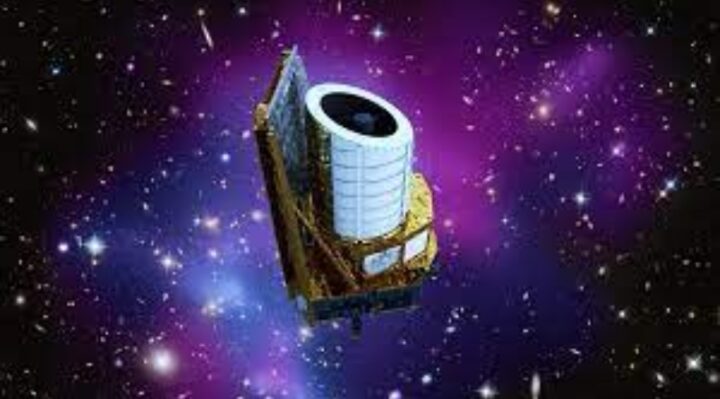
The vision of the European Space Agency’s Euclid spacecraft is beginning to be affected by a few layers of water ice, the agency announced on Tuesday. Now, the space agency is collaborating with others to test a recently developed protocol for spacecraft de-icing.
Euclid is the “dark universe detective” for ESA, tasked with figuring out how dark energy and dark matter shaped the universe. These mysterious objects, about which scientists know very little, appear to make up around 95% of the known cosmos.
Euclid’s optics are covered in layers of ice the same width as a strand of DNA, but the spacecraft’s vision is already being affected. This could provide a challenge to the extremely delicate mission, which needs to be extremely precise in order to look into the nature of the dark cosmos. The Euclid staff will have a new strategy to keep the spacecraft’s optical systems clear of ice for the duration of its mission if the “deicing” test is successful.
Once in space, Euclid’s problem is a frequent one for spacecraft. Because of the vacuum in space, some of the spacecraft’s components are gradually releasing the water they took in during construction on Earth. These water molecules will stick to the first surface they come into contact with when combined with the extreme cold of the spacecraft’s surroundings. The water got on the extremely sensitive optics, which is the issue.
“We compared the starlight entering the VIS instrument with the brightness of the same stars observed by ESA’s Gaia mission and Euclid at previous times.” While the brightness of some stars in the universe fluctuate, most stars remain constant throughout many millions of years. Thus, we knew it wasn’t them-rather, it was us-when our equipment picked up a slight, steady drop in photons streaming in, according to a press release from Mischa Schirmer, a calibration scientist with the Euclid consortium and one of the primary architects of the new de-icing strategy.
For the majority of spacecraft, using built-in heaters to modestly boost the temperature throughout the craft would be sufficient to clean the optics. However, materials expand when heated, and cooling doesn’t necessarily cause them to return to their original state. For a mission that is really fragile, this is an issue.
In order to reduce the chance that these temperature fluctuations would impact its sensitivity, the Euclid team will progressively heat each low-risk section of the spacecraft one at a time until they get the desired outcomes.


